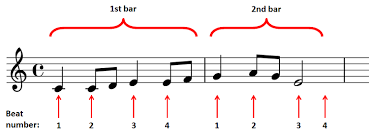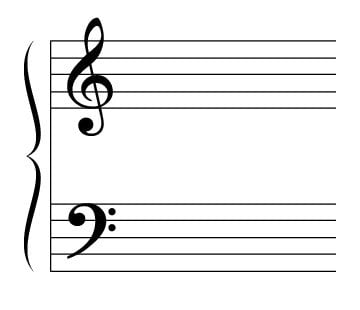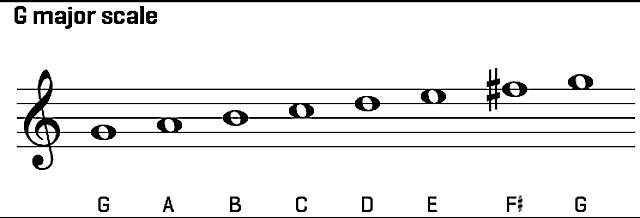Heyo!! Reading music is a great skill to have and it’s also one that you can learn at any age. So, here are some of the basics.
The Staff
A music staff has five lines and looks like this:

The music notes can either lie on the lines or in the spaces. They can also lie above or below the staff on ledger lines, which look like this:

Bars
Lines of music are usually separated into bars, which look like this:

Time Signatures
The time signature tells you how many beats per bar are in a piece; the most common ones are:
4/4 - Four beats per bar (also represented with a C for Common Time)
3/4 - Three beats per bar
2/4 - Two beats per bar
6/8 - Six beats per bar
Note/rest values
Different notes and rests have different beat values that determine how long you hold the note or pause for a rest. Here’s a chart I found that breaks down the different note and rest values:

The Clefs
The clef determines the range of notes on a staff. The two most common ones are the treble clef (the one on top) and the bass clef (the one below it).

Each clef has different note values for each line and space. In the treble clef, the lines (from bottom to top) are the notes E G B D F and the spaces are F A C E. The way I learned to remember them is for the lines, use the phrase Every Good Boy Desrves Fudge and for the spaces, they spell out FACE. In the bass clef, the lines are the notes G B D F A and the spaces are A C E G. The phrases I learned to remember these by are Great Big Dogs Fight Animals for the lines and All Cows Eat Grass for the spaces.
Keys and Scales
Most pieces of music are written in a key. The key determines the tonic or home note of the piece. So, if a piece is written in the key of C, that means C is the tonic note. Scales are a collection of eight notes in order from low to high. They can be major or minor. For the sake of this, I’ll just stick to the major scales. Common major scales include:
C Major
F Major
G Major

Bb Major
Key Signatures
The key signature is the collection of sharps and flats that appear on the scale. It will be placed at the beginning of the piece beside the clef and time signature. It looks like this:

Sharps, Flats and Naturals
You may have noticed weird symbols beside some of the notes on the scales. Those are called sharps and flats. They’re the black keys on a piano. Sharps are the ones that look like hashtags. They raise the note by a semitone. The ones that look like a lowercase b are called flats. They lower the note by a semitone. Sharps and flats can be part of the key signature or appear as accidentals throughout the piece. Naturals cancel out any previous accidentals. Here’s a diagram I found that shows what the different symbols look like:

Whole Tones and Semitones
Tones are the distance in pitch between two notes. A whole tone is the equivalent of two semitones. On a piano, a whole tone would be from one white key to the next one and a semitone would be from a white key to a black one.
I hope that you find this guide helpful!! I’ve included everything I can think of, but if there’s anything you think is missing, let me know so I can add it and don’t be afraid to ask questions if there’s something that doesn’t make sense!


